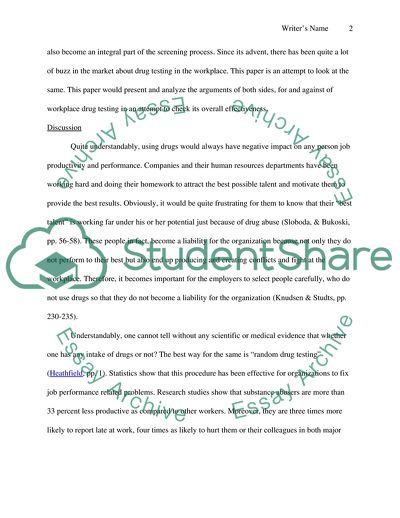Cite this document
(The Arguments for and against Workplace Drug Testing Case Study Example | Topics and Well Written Essays - 1500 words, n.d.)
The Arguments for and against Workplace Drug Testing Case Study Example | Topics and Well Written Essays - 1500 words. https://studentshare.org/human-resources/1735397-the-effectiveness-of-drug-testing-in-the-workplace
The Arguments for and against Workplace Drug Testing Case Study Example | Topics and Well Written Essays - 1500 words. https://studentshare.org/human-resources/1735397-the-effectiveness-of-drug-testing-in-the-workplace
(The Arguments for and Against Workplace Drug Testing Case Study Example | Topics and Well Written Essays - 1500 Words)
The Arguments for and Against Workplace Drug Testing Case Study Example | Topics and Well Written Essays - 1500 Words. https://studentshare.org/human-resources/1735397-the-effectiveness-of-drug-testing-in-the-workplace.
The Arguments for and Against Workplace Drug Testing Case Study Example | Topics and Well Written Essays - 1500 Words. https://studentshare.org/human-resources/1735397-the-effectiveness-of-drug-testing-in-the-workplace.
“The Arguments for and Against Workplace Drug Testing Case Study Example | Topics and Well Written Essays - 1500 Words”. https://studentshare.org/human-resources/1735397-the-effectiveness-of-drug-testing-in-the-workplace.


